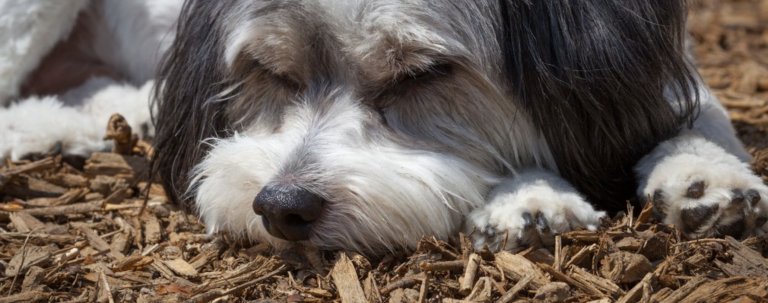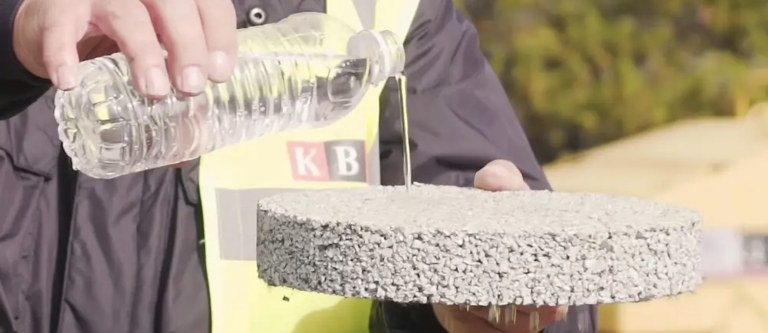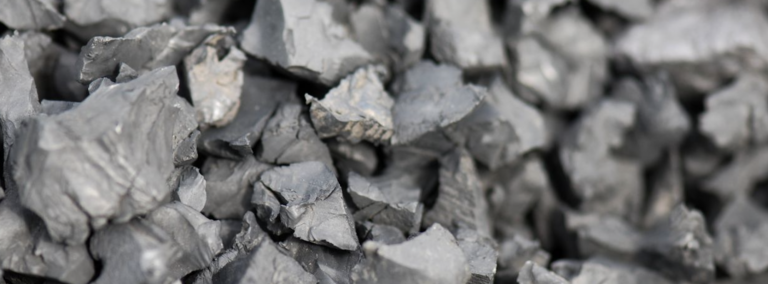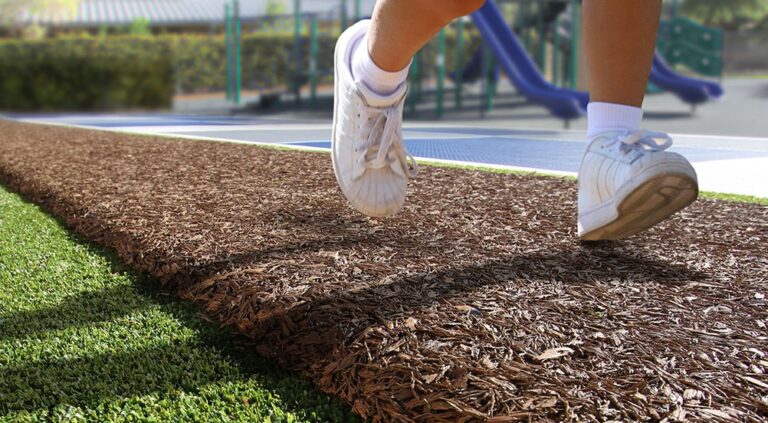Yes, all wet-pour rubber surfacing is porous, and for a good reason.
The porosity of rubber drastically affects its performance and durability. It also influences the safety and usability of rubber surfaces, particularly those used in playgrounds and pavements. It’s good that rubber surfacing is porous!
Rubber surfacing is an excellent choice for residential and commercial applications because it can filter and capture moisture, absorb impact, and prevent slips and falls. This blog post will explain the porosity of rubber surfacing and why it’s beneficial for many applications.
What Is Rubber Surfacing
Rubber surfacing is a type of surfacing material that contains rubber particles, usually derived from recycled tires. Also called wet pour rubber or poured-in-place rubber (PIP), this material is mixed with a binder to form a rubberized surface that’s flexible and durable.
It can be used for various applications — such as sidewalks, driveways, playgrounds, and pool decks — and even to cover entire floors in residential or commercial buildings. It is also popular for government and public projects because it is cost-effective, long-lasting, and requires minimal maintenance.
The porosity of rubber surfacing is one of its key benefits. This material’s ability to absorb water and other liquids allows it to filter and capture moisture, reducing the risk of slips, falls, and other accidents. It also limits the growth of mold and mildew, making it an excellent choice for hot and humid climates.
In addition to its porosity, rubber surfacing is non-abrasive and resistant to UV radiation, temperature fluctuations, chemicals, oils, and other materials that could damage it. This makes it an ideal option for high-traffic areas and outdoor environments.
The Advantages of Wet Pour Rubber Surfacing
Rubber surfacing has several advantages over other materials such as concrete, asphalt, and wood. As mentioned, its porous nature allows it to absorb water and other liquids without becoming slippery or saturated. It’s also highly durable and resistant to weathering and UV radiation, making it ideal for areas with high foot traffic.
Here are some of the other advantages of using rubber surfacing.
Shock-absorbent
Rubber surfacing has a shock-absorbing quality that helps reduce impact and noise from foot traffic, which makes it ideal for playgrounds, sports surfaces, and other areas where people may be running or jumping.
Safety Features
Rubber surfacing is non-slip and provides cushioning, making it a safe choice for playgrounds and other recreational areas. It also filters out dust particles that can cause allergies or other respiratory issues.
Soft and Highly-durable
Because rubber surfacing is flexible and able to move with the ground’s surface, it’s less likely to crack or break during extreme temperature fluctuations. It also remains soft even after prolonged exposure to sunlight, making it an excellent choice for outdoor applications.
No Known Toxic Chemicals
Unlike some other surfacing materials, rubber surfacing does not contain known toxic chemicals or compounds. That’s why it’s a popular choice for areas that children may play in. It’s also an eco-friendly option for residential and commercial applications.
The Applications of Rubber Surfacing
Rubber surfacing can be used for a variety of applications, including the following.
Schools and Daycares
Rubber surfacing is perfect for areas that children frequent because it’s a safe, shock-absorbent material. It also helps reduce noise levels and is non-slip, making it ideal for playgrounds and other recreational areas. The cushioning provides additional safety for playing sports and other activities. It can also be a good surface for daycare flooring where children can play or nap.
Urban Development
Rubber surfacing is also suitable for walkways, sidewalks, and other public areas because it’s durable, requires minimal maintenance, and provides excellent drainage. The porous nature of rubber surfacing can also support the deep rooting of plants and trees and reduces the chances of sidewalk cracking.
Senior Care and Assisted Living Facilities
Rubber surfacing is an ideal flooring choice for senior care and assisted living facilities because it helps reduce the risk of slip-and-fall accidents. It also provides cushioning, helping to prevent joint pain or discomfort associated with long walks. Also, its non-abrasive structure is beneficial for wheelchairs and walkers.
Final Thoughts
Rubber surfacing is a great choice for residential and commercial applications because of its porous nature, non-abrasive structure, shock-absorbing qualities, and safety features. It’s also highly durable, requires minimal maintenance, and is eco-friendly.
If you’re looking for a safe, durable, and affordable surfacing material that doesn’t compromise on quality, then rubber surfacing may be the perfect choice for you




